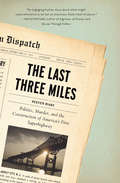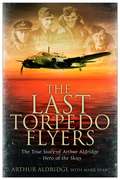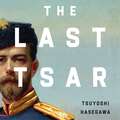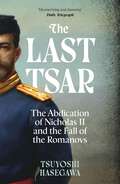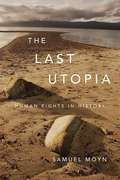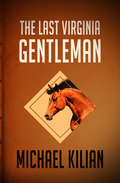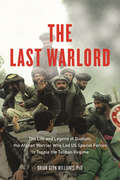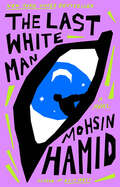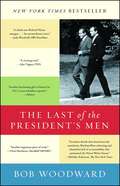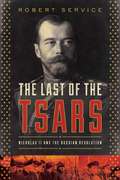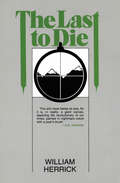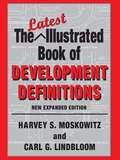- Table View
- List View
The Last Three Miles: Politics, Murder, and the Construction of America's First Superhighway
by Steven HartAn investigative history of Depression Era power brokers and labor wars in the construction of the Pulaski Skyway across the New Jersey Meadowlands. In the 1930s, as America&’s love affair with the automobile began, cars and trucks leaving the nation&’s largest city were dumped out of the Holland Tunnel onto local roads winding through New Jersey swampland. The Pulaski Skyway, America&’s first &“superhighway,&” would change all that by connecting the hub of New York City to the rest of the country. But the corrupt and violent path to its completion would change much more for Jersey City&’s residents and labor unions. Jersey City mayor Frank Hague—dictator of the Hudson County political machine and a national political player—was a prime mover behind the ambitious transit project. Hague&’s nemesis in this undertaking was union boss Teddy Brandle. Construction of the last three miles of the Pulaski Skyway, then simply known as Route 25, marked an epic battle between big labor and big politics, culminating in a murder and the creation of a motorway so flawed it soon became known as &“Death Avenue&”—appropriately featured in the opening sequence of HBO&’s hit series The Sopranos. A book in the tradition of Robert Caro&’s The Power Broker and Henry Petroski&’s Engineers of Dreams, The Last Three Miles brings to vivid life a riveting and bloodstained chapter in the heroic age of public works. &“A revealing look into how local politics can affect the design and construction of our national infrastructure, sometimes with disastrous results. Hart uses his considerable narrative talent to tell an engaging human story about what might seem otherwise to be but an enormous black steel structure.&” —Henry Petroski, author of Engineers of Dreams and Success Through Failure
The Last Torpedo Flyers
by Mark Ryan Arthur AldridgeImagine you are an RAF torpedo pilot in World War Two, sent on missions so dangerous that you're later likened to the Kamikaze. Suicide wasn't a recognised part of the objective for British airmen, yet some pilots felt they had accepted certain death just by climbing into their cockpits. There were times in 1942 when Arthur Aldridge felt like this. At the age of 19, this courageous young man had quit his studies at Oxford to volunteer for the RAF. He flew his Bristol Beaufort like there was no tomorrow - a realistic assumption, after seeing his best friend die in flames at the end of 1941. Aldridge was awarded a DFC (Distinguished Flying Cross) for his bravery on the same strike on a German cargo ship during which he lost a wing tip by flying too close to the deck. He was equally lucky to survive his squadron's chaotic torpedo attack on the giants of Hitler's maritime fleet during the notorious Channel Dash, which saw 40 RAF planes shot down. As 1942 wore on, and the stress became intolerable, Aldridge and his Cockney gunner Bill Carroll held their nerve, and 'Arty' was awarded a Bar to his DFC for sinking two enemy ships off Malta and rescuing a fellow pilot while wounded, as his own Beaufort took four shells. Malta was saved by the skin of its teeth, Rommel denied vital supplies in North Africa, and the course of the war was turned. Aldridge was still only 21 years old. Now both 91, but firm friends as ever, Aldridge and Carroll are two of the last torpedo airmen who deserve their place in history alongside our heroic Spitfire pilots. Their story vividly captures the comradeship that existed between men pushed by war to their very limit.
The Last Tsar: The Abdication of Nicholas II and the Fall of the Romanovs
by Tsuyoshi Hasegawa&“Elegantly written and magisterially researched&” (Robert Service, author of A History of Modern Russia), the definitive story behind the self-destruction of the autocratic Romanov dynasty, by the world&’s foremost expert When Tsar Nicholas II fell from power in 1917, Imperial Russia faced a series of overlapping crises, from war to social unrest. Though Nicholas&’s life is often described as tragic, it was not fate that doomed the Romanovs—it was poor leadership and a blinkered faith in autocracy. Based on a trove of new archival discoveries, The Last Tsar narrates how Nicholas&’s resistance to reform doomed the monarchy. Encompassing the captivating personalities of the era, it untangles the struggles between the increasingly isolated Nicholas and Alexandra and the factions of scheming nobles, ruthless legislators, and pragmatic generals who sought to stabilize the restive Russian empire either with the Tsar or without him. By rejecting compromise, Nicholas undermined his supporters at crucial moments. His blunders cleared the way for all-out civil war and the eventual rise of the Soviet Union. Definitive and engrossing, The Last Tsar uncovers how Nicholas II stumbled into revolution, taking his family, the Romanov dynasty, and the whole Russian Empire down with him.
The Last Tsar: The Abdication of Nicholas II and the Fall of the Romanovs
by Tsuyoshi HasegawaA HISTORY TODAY BOOK OF THE YEAR'Certain to become the definitive work' DOUGLAS SMITH'Elegantly written and magisterially researched' ROBERT SERVICE'Masterful . . . a chilling lesson' VLADISLAV ZUBOKThe definitive story behind the self-destruction of the autocratic Romanov dynasty, by the world's foremost expert.When Tsar Nicholas II fell from power in 1917, Imperial Russia faced a series of overlapping crises, from war to social unrest. Though Nicholas's life is often described as tragic, it was not fate that doomed the Romanovs - it was poor leadership and a blinkered faith in autocracy.Based on a trove of new archival discoveries, The Last Tsar narrates how Nicholas's resistance to reform doomed the monarchy. Encompassing the captivating personalities of the era, it untangles the struggles between the increasingly isolated Nicholas and Alexandra and the factions of scheming nobles, ruthless legislators, and pragmatic generals who sought to stabilize the restive Russian empire either with the Tsar or without him. By rejecting compromise, Nicholas undermined his supporters at crucial moments. His blunders cleared the way for all-out civil war and the eventual rise of the Soviet Union.Definitive and engrossing, The Last Tsar uncovers how Nicholas II stumbled into revolution, taking his family, the Romanov dynasty, and the whole Russian Empire down with him.
The Last Tsar: The Abdication of Nicholas II and the Fall of the Romanovs
by Tsuyoshi HasegawaA HISTORY TODAY BOOK OF THE YEAR'Certain to become the definitive work' DOUGLAS SMITH'Elegantly written and magisterially researched' ROBERT SERVICE'Masterful . . . a chilling lesson' VLADISLAV ZUBOKThe definitive story behind the self-destruction of the autocratic Romanov dynasty, by the world's foremost expert.When Tsar Nicholas II fell from power in 1917, Imperial Russia faced a series of overlapping crises, from war to social unrest. Though Nicholas's life is often described as tragic, it was not fate that doomed the Romanovs - it was poor leadership and a blinkered faith in autocracy.Based on a trove of new archival discoveries, The Last Tsar narrates how Nicholas's resistance to reform doomed the monarchy. Encompassing the captivating personalities of the era, it untangles the struggles between the increasingly isolated Nicholas and Alexandra and the factions of scheming nobles, ruthless legislators, and pragmatic generals who sought to stabilize the restive Russian empire either with the Tsar or without him. By rejecting compromise, Nicholas undermined his supporters at crucial moments. His blunders cleared the way for all-out civil war and the eventual rise of the Soviet Union.Definitive and engrossing, The Last Tsar uncovers how Nicholas II stumbled into revolution, taking his family, the Romanov dynasty, and the whole Russian Empire down with him.
The Last Undercover: The True Story of an FBI Agent's Dangerous Dance with Evil
by Bob HamerA 26-year veteran of the FBI reflects on the challenges he has endured and overcome, as he stared the dark side of humanity in the face and never blinked.
The Last Utopia: Human Rights In History
by Samuel MoynThe Last Utopia shows that it was in the decade after 1968 that human rights began to make sense to broad communities of people as the proper cause of justice. Across eastern and western Europe, as well as throughout the United States and Latin America, human rights crystallized in a few short years as social activism and political rhetoric moved it from the hallways of the United Nations to the global forefront. It was on the ruins of earlier political utopias, Moyn argues, that human rights achieved contemporary prominence. The morality of individual rights substituted for the soiled political dreams of revolutionary communism and nationalism as international law became an alternative to popular struggle and bloody violence. But as the ideal of human rights enters into rival political agendas, it requires more vigilance and scrutiny than when it became the watchword of our hopes.
The Last Virginia Gentleman
by Michael KilianA counterfeit stallion lures a Virginia horseman into a billion-dollar conspiracy Vicky Clay awakes with chills. She’s still glowing from her victory in last night’s steeplechase—the genteel form of horseracing for which the Virginia gentry lives and dies—but that’s not why her skin tingles. She has been poisoned, and within seconds, she’s as useless to the world as a thoroughbred with a broken leg. The stakes are high in the world of Virginia horseracing, where fortunes are won and lost by a hair. Captain David Showers, whose family has bred racing horses since before the Revolutionary War, knows how quickly luck can change. When he gets the chance to buy the descendant of a legendary mare, he leaps at the opportunity to revitalize his family stables. But the horse’s bloodline turns out to be a fabrication of the mafia, and Showers will have to ride faster than ever if he wants to stay alive.
The Last Vote: The Threats to Western Democracy
by Philip CogganThe Last Vote is a wake-up call showing why we cannot afford to take democracy for granted, from Philip Coggan, award-winning author of Paper Promises and The Money MachineCan we afford to take democracy for granted? It's now so much a part of our lives that we could be forgiven for thinking it mainly takes care of itself. Almost half the world's population now lives in a democratic state, while some Western democracies have now had universal suffrage for almost a century and have endured through even the most severe of global upheavals. In The Last Vote, Philip Coggan shows how democracy today faces threats that we ignore at our own risk. Amid the turmoil of the financial crisis, high debt levels, and an ever-growing gap between the richest and the rest, it is easy to forget that the ultimate victim could be our democracy itself. Tracing democracy's history and development, from the classical world through the revolution of the Enlightenment and on to its astounding success in the nineteenth and twentieth centuries, Coggan revisits the assumptions on which it is founded. What exactly is democracy? Why should we value it? What are its flaws? And could we do any better?The Last Vote is a wake-up call, and an illuminating defence of a system, which, in Churchill's words, is the worst possible form of government, except for all the others that have been tried. Reasoned, lucid and balanced, Coggan's argument parrots neither the agenda of left nor right, but calls for us all to work together to ensure we don't end up in an even greater mess than we're in today. Finally, he proposes ideas for change and improvement to the system itself so the next vote we cast will not be the last.Praise for Paper Promises:'This book stands way above anything written on the present economic crisis' Nassim Taleb, author of The Black Swan'Bold and confident... This book should be taken very seriously' John Authers, Financial Times'The most illuminating account of the financial crisis to appear to date ... written with a lucidity that conveys deep insights without a trace of jargon' John Gray, New StatesmanPhilip Coggan was a Financial Times journalist for over twenty years, and is now the Buttonwood columnist for the Economist. In 2009 he was named Senior Financial Journalist in the Harold Wincott awards and was voted Best Communicator at the Business Journalist of the Year Awards. He is the author of The Money Machine, and Paper Promises, winner of the Spears Business Book of the Year Award and longlisted for the Financial Times Goldman Sachs Business Book of the Year Award.
The Last Warlord: The Life and Legend of Dostum, the Afghan Warrior Who Led US Special Forces to Topple the Taliban Re
by Brian WilliamsChronicling the spectacular rise to power of General Abdul Rashid Dostum, this is an intimate profile of the one of the most powerful warlords to have dominated Afghanistan in the years since the Soviet withdrawal in the late 1980s. His rise from simple peasant villager to warrior against the repressive policies of the Taliban and Al Qaeda is told by one of the few outsiders to be accepted into Dostum's stronghold in the northern deserts of Afghanistan. Thanks to this unprecedented access, author Brian Glyn Williams was able to conduct lengthy interviews with Dostum and his family, as well as his subcommanders, local chieftains, mullahs, Taliban enemies, prisoners of war, and women's rights activists. What emerges is an intensely personal account of the Mongol warlord, detailing his childhood, motivations, hopes for his country, and conviction that it is time for a new generation of Western-trained technocrats to shape his country's destiny. With the drawing down of U.S. troops in 2014 and Dostum poised to reenter the world stage to fight a resurgent Taliban, this timely analysis provides important historical context to the controversy swirling around Afghanistan's warlord culture and is an essential contribution to the debate on Afghanistan's future.
The Last Warrior: Andrew Marshall and the Shaping of Modern American Defense Strategy
by Andrew F. Krepinevich Barry D. WattsAndrew Marshall is a Pentagon legend. For more than four decades he has served as Director of the Office of Net Assessment, the Pentagon's internal think tank, under twelve defense secretaries and eight administrations. Yet Marshall has been on the cutting edge of strategic thinking even longer than that. At the RAND Corporation during its golden age in the 1950s and early 1960s, Marshall helped formulate bedrock concepts of US nuclear strategy that endure to this day; later, at the Pentagon, he pioneered the development of "net assessment"-a new analytic framework for understanding the long-term military competition between the United States and the Soviet Union. Following the Cold War, Marshall successfully used net assessment to anticipate emerging disruptive shifts in military affairs, including the revolution in precision warfare and the rise of China as a major strategic rival of the United States.In The Last Warrior, Andrew Krepinevich and Barry Watts-both former members of Marshall's staff-trace Marshall's intellectual development from his upbringing in Detroit during the Great Depression to his decades in Washington as an influential behind-the-scenes advisor on American defense strategy. The result is a unique insider's perspective on the changes in US strategy from the dawn of the Cold War to the present day.Covering some of the most pivotal episodes of the last half-century and peopled with some of the era's most influential figures, The Last Warrior tells Marshall's story for the first time, in the process providing an unparalleled history of the evolution of the American defense establishment.
The Last White Man: A Novel
by Mohsin HamidNAMED A BEST BOOK OF THE SUMMER BY TIME, ELLE, USA TODAY, ENTERTAINMENT WEEKLY AND MORE&“Perhaps Hamid&’s most remarkable work yet … an extraordinary vision of human possibility.&” –Ayad Akhtar, author of Homeland Elegies &“Searing, exhilarating … reimagines Kafka&’s iconic The Metamorphosis for our racially charged era.&” Hamilton Cain, Oprah DailyFrom the New York Times-bestselling author of Exit West, a story of love, loss, and rediscovery in a time of unsettling change. One morning, a man wakes up to find himself transformed. Overnight, Anders&’s skin has turned dark, and the reflection in the mirror seems a stranger to him. At first he shares his secret only with Oona, an old friend turned new lover. Soon, reports of similar events begin to surface. Across the land, people are awakening in new incarnations, uncertain how their neighbors, friends, and family will greet them.Some see the transformations as the long-dreaded overturning of the established order that must be resisted to a bitter end. In many, like Anders&’s father and Oona&’s mother, a sense of profound loss and unease wars with profound love. As the bond between Anders and Oona deepens, change takes on a different shading: a chance at a kind of rebirth--an opportunity to see ourselves, face to face, anew. In Mohsin Hamid&’s &“lyrical and urgent&” prose (O Magazine), The Last White Man powerfully uplifts our capacity for empathy and the transcendence over bigotry, fear, and anger it can achieve.
The Last Winter of the Weimar Republic: The Rise Of The Third Reich
by Rüdiger Barth Hauke FriederichsA thrilling day-by-day account of the final months of the Weimar Republic, documenting the collapse of democracy in Germany and Hitler’s frightening rise to power. November 1932. With the German economy in ruins and street battles raging between rival political parties, the Weimar Republic is on its last legs. In the halls of the Reichstag, party leaders scramble for power and influence as the elderly president, Paul von Hindenburg, presides over a democracy pushed to the breaking point. Chancellors Franz von Papen and Kurt von Schleicher spin a web of intrigue, vainly hoping to harness the growing popularity of Adolf Hitler’s Nazi Party while reining in its most extreme elements. These politicians struggle for control of a turbulent city where backroom deals and frightening public rallies alike threaten the country’s fragile democracy, with terrifying consequences for both Germany and the rest of the world. In The Last Winter of the Weimar Republic, Barth and Friedrichs have drawn on a wide array of primary sources to produce a colorful, multi-layered portrait of a period that was by no means predestined to plunge into the abyss, and which now seems disturbingly familiar.
The Last Years of Karl Marx: An Intellectual Biography
by Marcello MustoAn innovative reassessment of the last writings and final years of Karl Marx. In the last years of his life, Karl Marx expanded his research in new directions—studying recent anthropological discoveries, analyzing communal forms of ownership in precapitalist societies, supporting the populist movement in Russia, and expressing critiques of colonial oppression in India, Ireland, Algeria, and Egypt. Between 1881 and 1883, he also traveled beyond Europe for the first and only time. Focusing on these last years of Marx's life, this book dispels two key misrepresentations of his work: that Marx ceased to write late in life, and that he was a Eurocentric and economic thinker fixated on class conflict alone. With The Last Years of Karl Marx, Marcello Musto claims a renewed relevance for the late work of Marx, highlighting unpublished or previously neglected writings, many of which remain unavailable in English. Readers are invited to reconsider Marx's critique of European colonialism, his ideas on non-Western societies, and his theories on the possibility of revolution in noncapitalist countries. From Marx's late manuscripts, notebooks, and letters emerge an author markedly different from the one represented by many of his contemporary critics and followers alike. As Marx currently experiences a significant rediscovery, this volume fills a gap in the popularly accepted biography and suggests an innovative reassessment of some of his key concepts.
The Last of the Duchess
by James Fox Caroline BlackwoodIntriguing, suspenseful, and witty, this is the story of journalist and novelist Caroline Blackwood's search for the late Duchess of Windsor. It is also a provocative exploration of the often bizarre connection between heightened celebrity and approaching death--in Blackwood's words, "the fatal effects of myth." First serial to New York Times Magazine.
The Last of the Duchess: The Strange and Sinister Story of the Final Years of Wallis Simpson, Duchess of Windsor
by James Fox Caroline BlackwoodIntriguing, suspenseful, and witty, this is the story of journalist and novelist Caroline Blackwood's search for the late Duchess of Windsor. It is also a provocative exploration of the often bizarre connection between heightened celebrity and approaching death--in Blackwood's words, "the fatal effects of myth." First serial to New York Times Magazine.
The Last of the President's Men
by Bob WoodwardBob Woodward exposes one of the final pieces of the Richard Nixon puzzle in his new book The Last of the President’s Men. Woodward reveals the untold story of Alexander Butterfield, the Nixon aide who disclosed the secret White House taping system that changed history and led to Nixon’s resignation. In forty-six hours of interviews with Butterfield, supported by thousands of documents, many of them original and not in the presidential archives and libraries, Woodward has uncovered new dimensions of Nixon’s secrets, obsessions and deceptions. The Last of the President’s Men could not be more timely and relevant as voters question how much do we know about those who are now seeking the presidency in 2016—what really drives them, how do they really make decisions, who do they surround themselves with, and what are their true political and personal values?
The Last of the Tsars: Nicholas Ii And The Russia Revolution
by Robert ServiceA riveting account of the last eighteen months of Tsar Nicholas II's life and reign from one of the finest Russian historians writing today. In March 1917, Nicholas II, the last Tsar of All the Russias, abdicated and the dynasty that had ruled an empire for three hundred years was forced from power by revolution. Now, on the hundredth anniversary of that revolution, Robert Service, the eminent historian of Russia, examines Nicholas's life and thought from the months before his momentous abdication to his death, with his family, in Ekaterinburg in July 1918. The story has been told many times, but Service's deep understanding of the period and his forensic examination of previously untapped sources, including the Tsar's diaries and recorded conversations, as well as the testimonies of the official inquiry, shed remarkable new light on his troubled reign, also revealing the kind of Russia that Nicholas wanted to emerge from the Great War. The Last of the Tsars is a masterful study of a man who was almost entirely out of his depth, perhaps even willfully so. It is also a compelling account of the social, economic and political ferment in Russia that followed the February Revolution, the Bolshevik seizure of power in October 1917 and the beginnings of Lenin's Soviet socialist republic.
The Last to Die
by William HerrickHigh in the towering Andes, a man is on the run, being chased as much by his own raging demons as by encircling army patrols. He is Ramon Cordes, the man many consider the greatest, and perhaps last, romantic revolutionary of our time. Cordes has been betrayed. But by whom? Was it Marguerite, the only woman he has ever loved? Was it Rojos, the Party leader who shares power with no one? Or was it Ramon himself--betrayed by his doubts, by his own mocking intelligence? With the same overwhelming force and savage eloquence that characterized his great Spanish Civil War novel, Hermanos!, William Herrick involves us in the relentless hunt for Ramon Cordes. The Last to Die is a uniquely contemporary and unforgettable story of the hunted and the hunters--and the violent destiny that awaits the man who chooses to live according to his own morality.
The Late Lord: The Life of John Pitt–2nd Earl of Chatham
by Jacqueline ReiterThis biography of the second Earl of Chatham looks beyond his famous military failure to reveal one of the early nineteenth century’s most fascinating figures.John Pitt, 2nd Earl of Chatham, is one of the most enigmatic and overlooked figures of early nineteenth century British history. The elder brother of Pitt the Younger, he has long been consigned to history as the late Lord Chatham, the lazy commander-in-chief of the 1809 Walcheren expedition, whose inactivity and incompetence turned what should have been an easy victory into a disaster. In The Late Lord, Jacqueline Reiter presents a more nuanced and revealing portrait. During a twenty-year career at the heart of government, Pitt served in several important cabinet posts such as First Lord of the Admiralty and Master-General of the Ordnance. Yet despite his closeness to the Prime Minister and friendship with the Royal Family, political rivalries and private tragedy hampered his ascendance. Paradoxically for a man of widely admired diplomatic skills, his downfall owed as much to his personal insecurities and penchant for making enemies as it did to military failure.Using a variety of manuscript sources to tease Chatham from the records, this biography peels away the myths and places him for the first time in proper familial, political, and military context. It breathes life into a much-maligned member of one of Britain’s greatest political dynasties, revealing a deeply flawed man trapped in the shadow of his illustrious relatives.
The Late Marxs Revolutionary Roads: Colonialism, Gender, and Indigenous Communism
by Kevin B. AndersonThe author of the acclaimed Marx at the Margins analyses the late Marx on Indigenous communism, gender, and anti-colonialism.In his late writings, Marx went beyond the boundaries of capital and class in the Western European and North American contexts. Kevin Anderson carries out a systematic analysis of Marx&’s Ethnological Notebooks and related texts on Russia, India, Ireland, Algeria, Latin America, and ancient Rome. These texts, some of them only now being published, provide evidence for a change of perspective, away from Eurocentric worldviews or unilinear theories of development. As Anderson shows, the late Marx elaborated a truly global, multilinear theory of modern society and its revolutionary possibilities.
The Late Medieval Scottish Parliament: Politics and the three Estates, 1424–1488
by Roland TannerIn this ground-breaking study of the medieval parliament, Roland Tanner gives the Scottish Parliament a human face by examining the actions and motives of those who attended. In the past, the Scottish Parliament was seen as a weak and ineffective institution – damned because of its failure to be more like its English counterpart. But Roland Tanner shows that the old picture of weakness is far from accurate. In its very different way, the Scottish Parliament was every bit as powerful as the English institution. The ‘Three Estates’ (the clergy, nobility and burgh representatives who attended Parliament) were able to wield a surprising degree of control over the Crown during the fifteenth century. For instance, they threatened to lock James I’s taxation in a box to which he, the king, would have no access, made James II swear not to alter acts of Parliament, and prevented him from using his own lands and wealth as patronage for his supporters, and forbade James III to leave the country. Roland Tanner has avoided a dry constitutional approach. Instead he has sought to bring Parliament to life through the people who attended, the reasons why they attended, and the complex interactions which occurred when all the most wealthy, powerful and ambitious people in the kingdom gathered in one place.
The Latecomer's Rise: Policy Banks and the Globalization of China's Development Finance (Cornell Studies in Money)
by Muyang ChenIn The Latecomer's Rise, Muyang Chen reveals the nature and impact of a rapidly growing form of international lending: Chinese development finance.Over the past few decades, China has become the world's largest provider of bilateral development finance. Through its two national policy banks, the China Development Bank (CDB) and the Export-Import Bank of China (China Exim), it has funded infrastructure and industrial projects in numerous emerging markets and developing countries. Yet this very surge and magnitude of capital has raised questions about the characteristics of Chinese bilateral lending and its repercussions on the international order. Drawing on a variety of novel Chinese primary sources, including interviews and official bank documents, Chen pinpoints the distinctiveness of Chinese bilateral development finance, explains its origins, and analyzes its effects. She compares Chinese policy banks with their foreign counterparts to show that the CDB and China Exim, while state-supported, are in fact also market-oriented—they are as much government organs as they are profit-driven financial agencies that serve both state and firms' interests. This approach, which emerged out of China's particular economic history, suggests that Chinese overseas lending is not merely a tool of economic statecraft that challenges Western-led economic regimes. Instead, China's responses to extant rules, norms, and practices across given issue areas have varied between contestation and convergence.Rich with empirical detail and penetrating insights, The Latecomer's Rise demystifies the little-known workings of Chinese development finance to revise our conceptions of China's role in the international financial system.
The Later Letters of John Stuart Mill 1849-1873: Volumes XIV-XVII
by John Stuart Mill Dwight Lindley Francis MinekaThe Earlier Letters of John Stuart Mill, published in two volumes in 1963, were well received by critics and scholars alike. The publication of these four volumes of later letters completes this edition of Mill's personal correspondence. These volumes contain over 1,800 letters, most never before published, and some sixty earlier letters that have come to light since the publication of the first two volumes of correspondence. The letters have been assembled from widely dispersed collections in the libraries of fifty-eight institutions and of some thirty private collections in Britain and in other countries of the Commonwealth, Europe, and North America. In addition, many personal letters of which no originals survived have been located in contemporary periodicals or biographies of Mill's correspondence.
The Latest Illustrated Book of Development Definitions
by Carl G. LindbloomIllustrated definitions are rarely found in zoning and development ordinances. Ordinances prefer the "thousand words" rather than the "single picture." Illustrations greatly simplify how standards should be applied, particularly where the lot or parcel is irregularly shaped or where there are a number of variables present, each of which might have an impact on how the ordinance might apply in a specific situation. This best-selling resource has been the mainstay of the planner's bookshelf since its first publication and it differs from other books and publications containing development definitions in three major respects: It is illustrated; most of the definitions are designed to be used directly in ordinances with little or no change; and the more complex definitions are accompanied by commentaries and annotations that explain how the definition may be used in an ordinance, along with background information pertinent to the definition. This expanded edition standardizes in one handy reference all the key terms used in zoning, subdivision, site plan, and environmental ordinances. In all, it contains 1,957 definitions and 103 illustrations that can be incorporated in local ordinances with little or no change. Written and illustrated by two professional planners with nearly eighty years of combined experience in the practice of planning and zoning, this is a basic working tool and required reference for anyone involved in land development planning and regulation.
